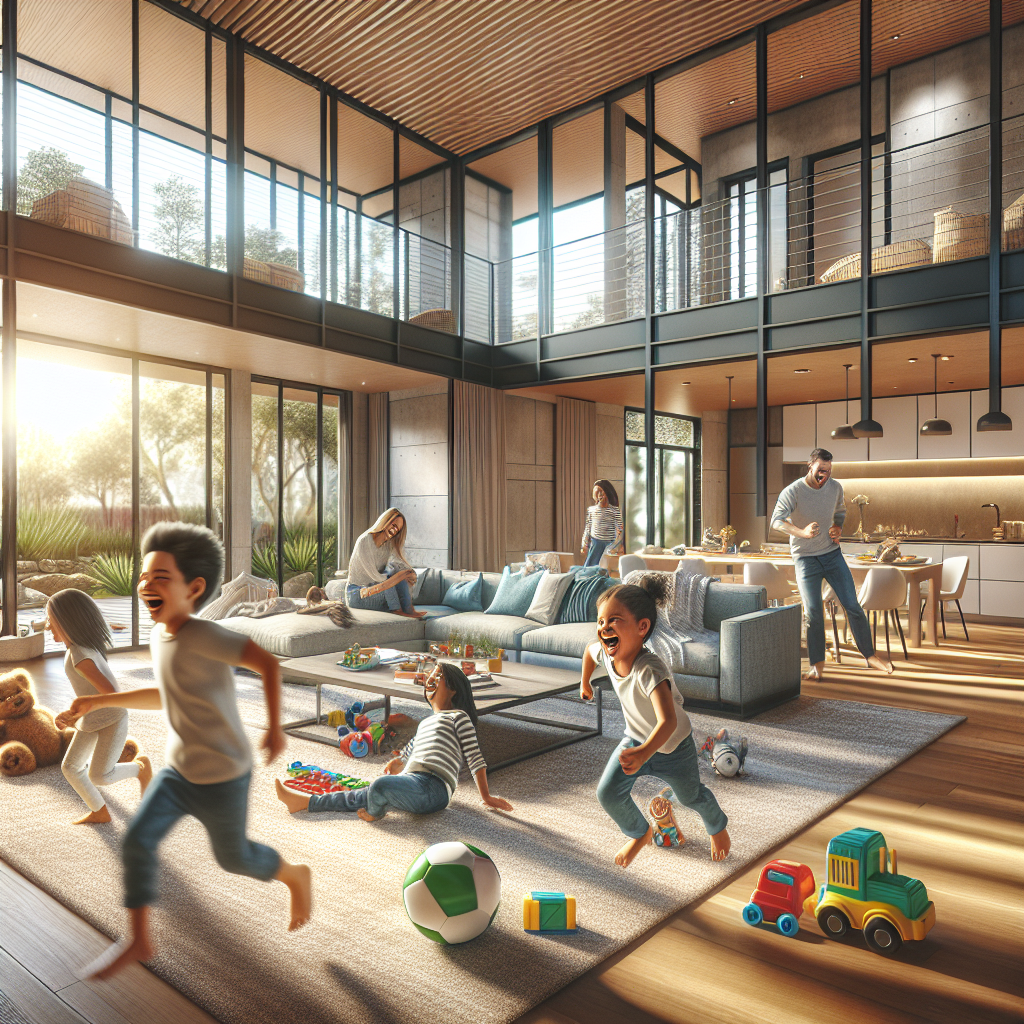Refind Realty Blog

Which Floor Plan is Best for Your Busy Family with Kids?
Which Floor Plan is Best for Your Busy Family with Kids?
Selecting the ideal floor plan goes beyond simply choosing an attractive layout; it's about designing a home that aligns with your lifestyle, accommodates your family's needs, and enhances daily routines. For families with children, the right floor plan can significantly impact whether your home feels chaotic or organized and manageable.

How Your Daily Routine Impacts Your Floor Plan Choice
Before exploring different layouts, take a step back and think about how your family moves through the day:
Morning Hustle: Are your kids scrambling to get ready for school? A floor plan with easy access to bathrooms and organized entryways for shoes, backpacks, and coats can keep mornings stress-free.
Family Bonding: If you love spending evenings watching movies, playing games, or cooking together, an open-concept living space might be ideal.
Homework & Quiet Time: Do your kids need a designated study space? A home with a dedicated office or a quiet nook can help minimize distractions.
By understanding your family's unique routine, you can choose a floor plan that makes life easier instead of adding unnecessary stress.
Open Floor Plans: The Pros and Cons
Why Families Love Open Floor Plans
Better Visibility: Open-concept layouts connect the kitchen, living, and dining spaces, making it easy to keep an eye on kids while cooking or working.
More Space for Activities: The lack of walls allows for larger play areas, family gatherings, and multi-purpose spaces.
Natural Light: With fewer barriers, sunlight flows freely, making your home feel warm and welcoming.
Potential Drawbacks of Open Floor Plans
Limited Privacy: If your household values quiet time, an open layout may feel too exposed.
Noise Levels: Sound travels easily, which can be a challenge when one person is watching TV while another is studying.
Temperature Control: Heating and cooling a large, open space can be less energy-efficient and more expensive.
Traditional Floor Plans: What Works and What Doesn’t
The Advantages of Traditional Layouts
Defined Spaces: Separate rooms allow for more focused activities, whether it's a quiet study area or a cozy reading corner.
Increased Privacy: Kids can have their own dedicated spaces, and parents can retreat to their own sanctuary.
Better Energy Efficiency: Smaller, enclosed spaces are easier to heat and cool efficiently, helping reduce energy bills.
The Downsides of Traditional Floor Plans
Less Interaction: With separate rooms, family members might feel disconnected.
Tighter Spaces: If you love entertaining, traditional layouts may not provide the open feel you desire.
Limited Sight Lines: Parents of young children may find it harder to keep an eye on kids in different rooms.
How to Choose the Best Floor Plan for Your Family
Look for Flexibility
Opt for a home with rooms that can evolve with your family’s needs. A nursery today could become a home office or a guest room in the future.
Prioritize Safety & Accessibility
For families with small kids, consider features like open sightlines, rounded corners, and easy access to play areas or the backyard.
Plan for the Future
Think ahead—will you need more bedrooms as your family grows? Will you eventually want a home office or gym? Choose a home that adapts with you.
Smart Steps to Pick the Right Floor Plan
Tour Model Homes: Walk through different layouts to get a feel for what works best for your family’s needs.
Make a Must-Have List: Write down your top priorities, such as an open kitchen, a mudroom, or extra storage.
Talk to a Realtor: A real estate professional can offer valuable insights into popular layouts in your area.
Think About the Neighborhood: A great floor plan is important, but so is the community—look for parks, schools, and kid-friendly amenities.
Explore New Construction Options: If you’re considering a brand-new home, check out the best new home communities in Dallas TX. Browse new construction homes in Dallas TX to find your perfect fit.
Get Pre-Approved: Secure your financing early to streamline the home-buying process. Start your journey with pre-approval.
Educate Yourself: Learn about the new home buying process in Dallas TX and uncover hidden costs of buying a new home.
Join a Webinar: Get expert insights by signing up for a new construction home webinar.
Stay Within Budget: The perfect floor plan should also align with your financial goals. Consider long-term costs like utilities and maintenance.
Final Thoughts: Finding the Right Home for Your Family
Selecting a floor plan is more than just picking a house—it’s about choosing a home that enhances your family’s daily life. Whether you prefer an open layout or a traditional design, the key is finding a space that supports your needs today and adapts to your future. Your perfect home should make life easier, more enjoyable, and filled with cherished family moments.
#RealEstate #NewConstructionHomes #BuyNewHome #DallasTXNewHomes #NewHomeBuyingProcess
BLOG NAVIGATION
Contact Me By Filling Out
The Form Below
We Can Help You Reach Your Real Estate Goals!
Get In Touch With Me
Office 1229 E. Pleasant Run Ste 224, DeSoto TX 75115
Call :(713) 505-2280
Email: [email protected]
Site: www.stevenjthomas.com

Facebook
Instagram
X
LinkedIn
Youtube
TikTok